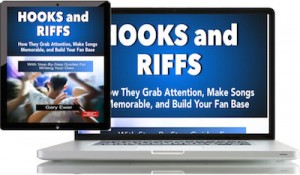As a songwriter, it wouldn’t be unusual to devote a lot of time to thinking about how to make your audience happy. You’re probably opting for fast tempos, major chords, and lyrics with an upbeat message. But you might be missing something: the positive effect that writing sad music can have on your audience.
In 2013 a Japanese study took a look at a strange conundrum in music: most of the time, sad music makes us feel good. That seems counterintuitive, doesn’t it? You would think that sad music would have the final effect of making us feel a bit miserable, but research shows that only to be partly true.
You can read a full account of how an experiment to support the study was conducted. The short version is this: two groups of participants were chosen: music students and non-musicians. They listened to three pieces of classical music — music that the participants hadn’t heard before, to avoid the potential problem of music connected to past personal experiences and emotions.
The listeners then described the music, and how they felt while listening to it. The most interesting part of this study, and I would say the most interesting part for songwriters to consider, is that they made a clear distinction between perceived emotion — what emotion they thought the music was trying to convey — and felt emotion — what emotion they were actually feeling when they heard the music.
 Gary’s most recent eBook, “Hooks and Riffs: How They Grab Attention, Make Songs Memorable, and Build Your Fan Base“, is part of the 10-eBook DELUXE BUNDLE.
Gary’s most recent eBook, “Hooks and Riffs: How They Grab Attention, Make Songs Memorable, and Build Your Fan Base“, is part of the 10-eBook DELUXE BUNDLE.
In most cases, musicians and non-musicians alike said that the music that was trying to convey sadness actually had an interesting effect: though it in fact did make them feel a little sadder, it also made them feel more romantic and happier. In other words, they liked feeling sad.
Interestingly, the researchers focused on music in a minor key as “sad music”, and I’m not so sure that that applies to music in general any more. If you read the article, you’ll see a more elaborate discussion on their use of minor key music.
For the purposes of this study, the researchers chose minor key music, but there’s a lot more than that in today’s songwriting that can convey sadness. In fact, in today’s pop genres, most sad songs use major keys. Here’s a short list of musical elements that might help you write music that “hurts so good.”
- Make good use of contour in your melodies. Contour simply means shape. Try to make good use of melodic leaps, both up and down. Explore the full range of the singer’s voice. The Righteous Brothers’ “Unchained Melody” is a great example, as well as “Everybody Hurts” (R.E.M.)
- Write about the effect of a painful event. It may seem logical to describe some hurtful event in your life, but those kind of story songs may not make a strong connection. It may be better to write about the effect that the event has had on you, more so than writing about the thing itself that’s caused the pain. One of the best examples of that is Eric Claption’s “Tears In Heaven.”
- Allow your lyrics to express hope. That’s often a key component of showing the listener a way through the sadness. Adele’s “Someone Like You” demonstrates this quality well. She goes from sadness (“I had hoped you’d see my face and that you’d be reminded/ That for me it isn’t over…”) to hope “(“Never mind, I’ll find someone like you…”).
- Major keys are often more effective. Most sad songs are in major keys, even though we often think of minor keys as the quintessential setting for sadness. But try this: start a song’s section on a minor chord, even if the song is primarily in a major key. Again, “Everybody Hurts” is a good example of this: The song is in D major, which is where the verse starts. The second half of the verse (pre-chorus) starts on an Em chord, which gives a nice melancholy touch.
- Use slower tempos. Slow songs allow for the time necessary for deeper, sadder and more introspective emotions to settle in. It gives you a lot of power to manipulate your audience, and makes things like crescendos (increasing volume) and heart-lunging guitar solos more effective.
So if you’re always a bit worried that sad songs are just going to bring your audience down, don’t overly worry about that. Research shows that you are probably achieving the right effect: you leave your audience feeling a bit better about life, and that’s always a good thing.
Written by Gary Ewer. Follow on Twitter.
 “The Essential Secrets of Songwriting” eBook Bundle packages have been used by thousands of songwriters to polish their technique and take their music to a new and exciting level of excellence. Get a copy of “Creative Chord Progressions” FREE with your purchase of the complete bundle.
“The Essential Secrets of Songwriting” eBook Bundle packages have been used by thousands of songwriters to polish their technique and take their music to a new and exciting level of excellence. Get a copy of “Creative Chord Progressions” FREE with your purchase of the complete bundle.










